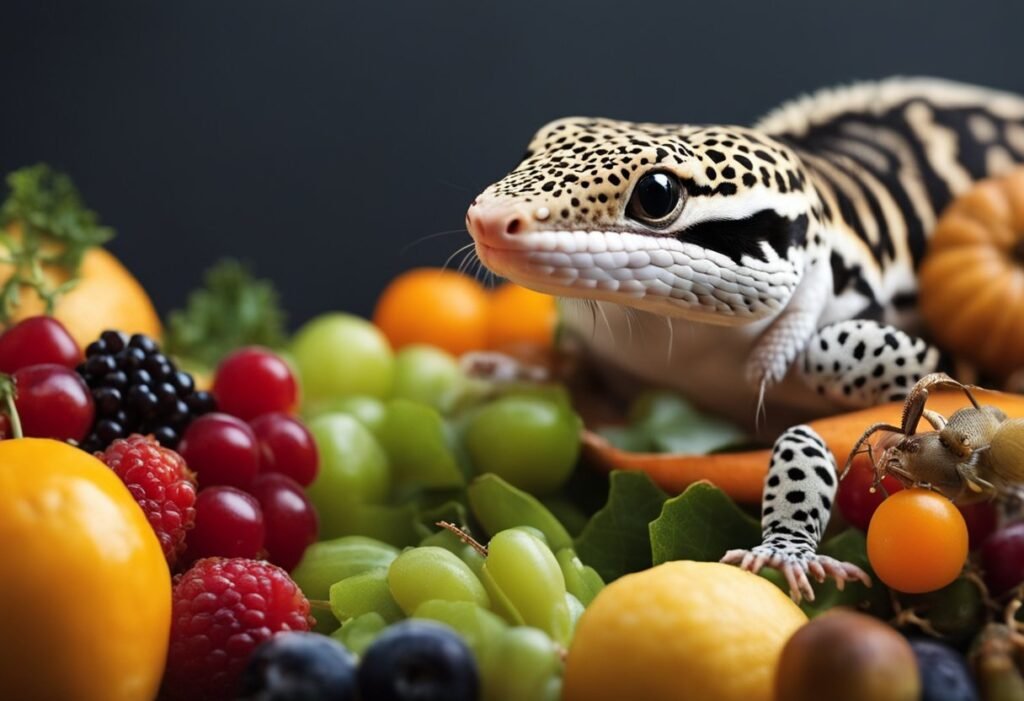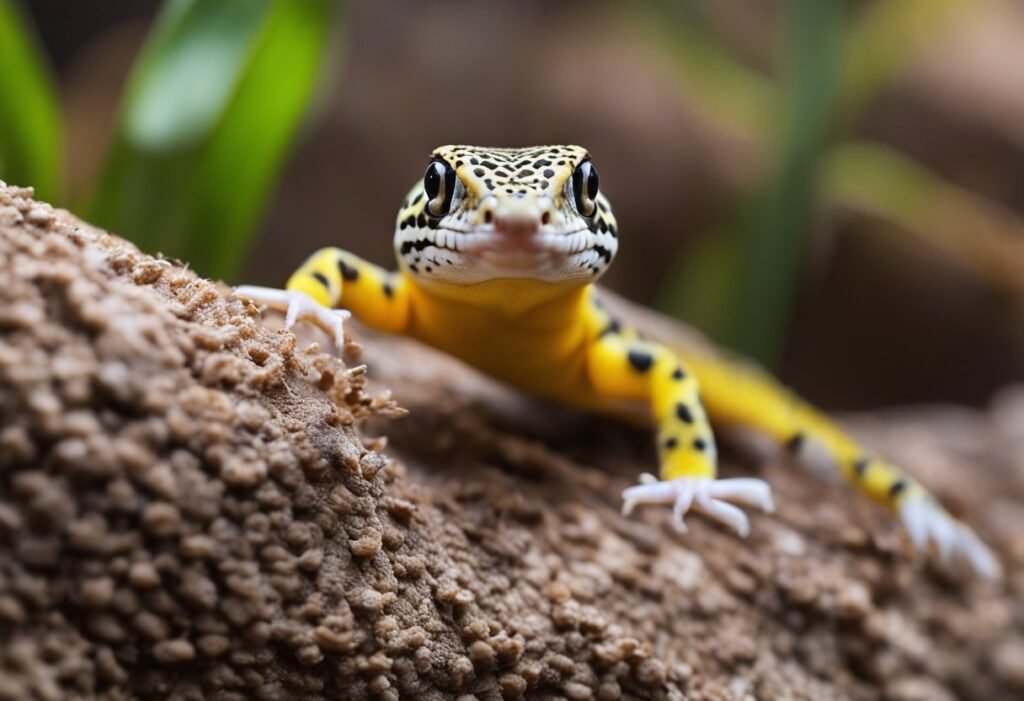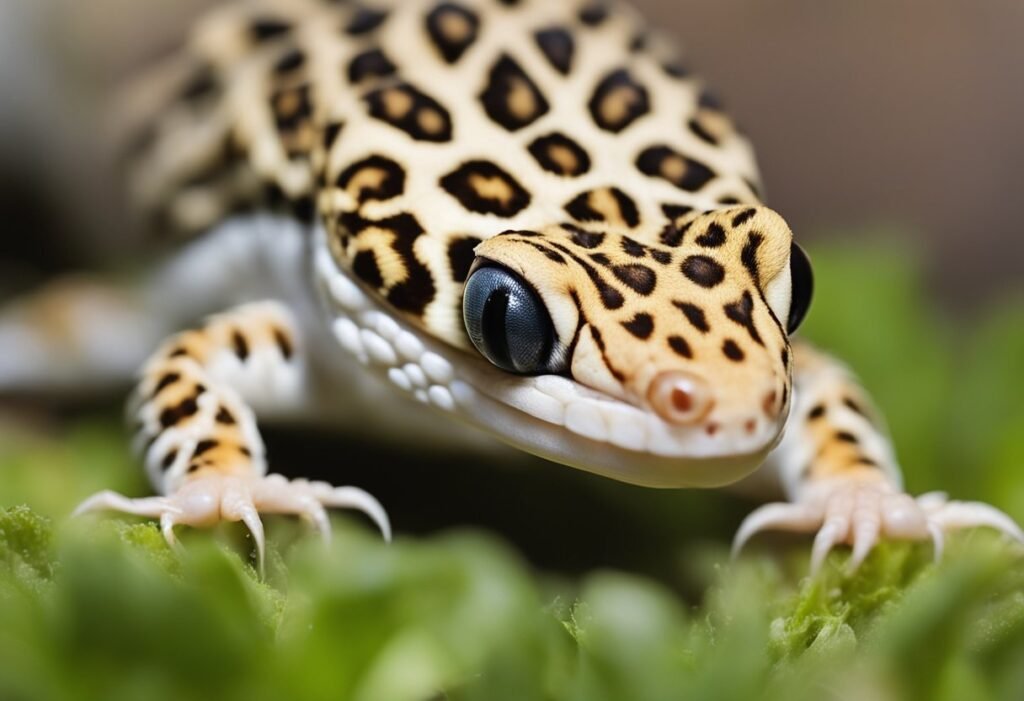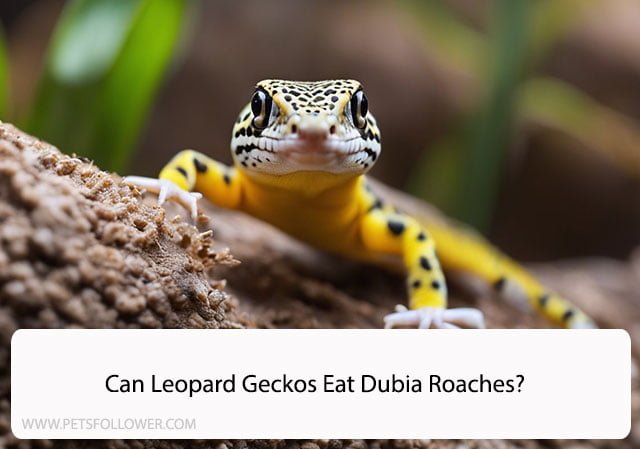Leopard geckos are one of the most popular reptile pets, and they require a varied diet to stay healthy. Dubia roaches are a nutritious and popular food choice for many reptile owners, but can leopard geckos eat them? In this article, we will explore whether or not dubia roaches are a suitable food source for leopard geckos.
First, we will discuss the nutritional requirements of leopard geckos and how dubia roaches stack up in terms of meeting these requirements. We will also examine the potential benefits and drawbacks of feeding dubia roaches to leopard geckos, including any potential health risks.
Overall, our goal is to provide a clear and informative answer to the question of whether or not leopard geckos can eat dubia roaches. By the end of this article, you should have a better understanding of what foods are best for your leopard gecko and whether or not dubia roaches should be a part of their diet.
Leopard Gecko Dietary Basics

As a responsible leopard gecko owner, it is crucial to understand the dietary requirements of your pet. In this section, we will discuss the nutritional requirements of leopard geckos as well as their feeding frequency and amount.
Nutritional Requirements
Leopard geckos are insectivores, which means they primarily eat insects. However, it is important to ensure that the insects they consume provide a balanced diet. The following table shows the nutritional value of some common feeder insects:
| Feeder Insect | Protein (%) | Fat (%) | Calcium (mg/kg) |
|---|---|---|---|
| Dubia Roaches | 23 | 7 | 300 |
| Crickets | 21 | 6 | 100 |
| Mealworms | 19 | 17 | 500 |
As you can see, dubia roaches are an excellent source of protein and calcium for leopard geckos. They also have a lower fat content compared to mealworms. However, it is important to ensure that the feeder insects are gut-loaded with nutritious food before feeding them to your leopard gecko.
Feeding Frequency and Amount
Leopard geckos should be fed every 2-3 days. The amount of food they consume depends on their age and size. As a general rule, feed juvenile leopard geckos as much as they can eat in 15 minutes. Adult leopard geckos, on the other hand, should be fed 3-4 appropriately sized insects per feeding.
Overfeeding can lead to obesity and other health problems, so it is important to monitor your leopard gecko’s weight and adjust their feeding schedule accordingly.
In conclusion, providing a balanced diet and appropriate feeding schedule is essential for the health and well-being of your leopard gecko. By following these guidelines, you can ensure that your pet stays healthy and happy.
Dubia Roaches as a Food Source
Dubia roaches have become increasingly popular as a food source for leopard geckos. They are a nutritious and easily digestible option that can provide many benefits for your pet. However, it is important to be aware of potential risks as well.
Benefits of Dubia Roaches
Dubia roaches are a great source of protein and other essential nutrients for leopard geckos. They have a high meat-to-shell ratio, which means that they are easy to digest and provide a lot of nutrition for their size. They are also low in fat, making them a healthier option compared to other feeder insects.
Another benefit of dubia roaches is that they are easy to keep and store. They do not make noise or smell, and they can be kept in a container with food and water for several weeks. They are also easy to breed, which can save you money in the long run.
Potential Risks
While dubia roaches are generally safe for leopard geckos to eat, there are a few potential risks to be aware of. One risk is that they can carry parasites or diseases, which can be transmitted to your pet. To avoid this, it is important to purchase your dubia roaches from a reputable source and to quarantine them before feeding them to your gecko.
Another risk is that dubia roaches can be too large for some leopard geckos to eat. It is important to choose the right size roaches for your pet, based on their age and size. Feeding your gecko roaches that are too large can cause digestive issues or even choking.
In conclusion, dubia roaches can be a great food source for leopard geckos, as long as they are used properly and with caution. By being aware of the potential risks and taking steps to mitigate them, you can provide your pet with a nutritious and healthy diet.
Preparing Dubia Roaches for Feeding

When it comes to feeding our leopard geckos, dubia roaches are an excellent source of nutrition. However, before we offer them to our pets, we need to make sure that they are properly prepared. In this section, we will discuss how to gut load and choose the appropriate size of dubia roaches.
Gut Loading Dubia Roaches
Gut loading is the process of feeding our feeder insects with nutritious food before offering them to our pets. This ensures that the nutrients are passed on to our leopard geckos when they eat the insects. We recommend feeding dubia roaches with a variety of fruits, vegetables, and grains such as carrots, sweet potatoes, and oats.
To gut load dubia roaches, we can either place the food directly in their enclosure or in a separate container. It is important to remove any uneaten food after 24 hours to prevent mold growth. We recommend gut loading dubia roaches for at least 24 hours before feeding them to our leopard geckos.
Appropriate Roach Size
Choosing the appropriate size of dubia roaches is important to prevent choking and ensure that our leopard geckos are getting the right amount of nutrition. As a general rule, the length of the dubia roach should not be larger than the space between our pet’s eyes.
For hatchlings and juveniles, we recommend feeding them with small dubia roaches that are around 1/4 inch to 1/2 inch in length. For adult leopard geckos, we can offer them with larger dubia roaches that are around 1 inch to 1 1/2 inches in length.
In conclusion, preparing dubia roaches for feeding requires us to gut load them with nutritious food and choose the appropriate size for our leopard geckos. By following these simple steps, we can ensure that our pets are getting the best nutrition possible.
Feeding Techniques
When it comes to feeding leopard geckos, there are a few techniques that we can use to ensure that they get the proper nutrition they need. In this section, we will discuss two feeding techniques: live feeding and tong feeding.
Live Feeding
Live feeding is a common practice among leopard gecko owners. It involves offering live prey to your gecko, such as dubia roaches. While some geckos may prefer live prey, there are some risks associated with this feeding technique.
One risk is that the live prey may injure your gecko during the feeding process. Another risk is that the live prey may carry parasites or diseases that can be passed on to your gecko.
If you choose to feed your leopard gecko live prey, it is important to supervise the feeding process and remove any uneaten prey after a few minutes.
Tong Feeding
Tong feeding is another feeding technique that can be used to feed your leopard gecko. This technique involves using a pair of feeding tongs to offer pre-killed prey to your gecko.
Tong feeding can be a safer alternative to live feeding, as there is no risk of injury from the prey. Additionally, pre-killed prey can be purchased frozen and thawed as needed, which can be more convenient for some gecko owners.
When tong feeding, it is important to ensure that the prey is an appropriate size for your gecko and that it is offered at the correct temperature. You can also use this feeding technique to offer other foods, such as mealworms or crickets.
Overall, both live feeding and tong feeding can be effective feeding techniques for leopard geckos. It is important to consider the risks and benefits of each technique and to choose the one that works best for you and your gecko.
Monitoring Your Leopard Gecko’s Health

As responsible pet owners, we must ensure that our leopard geckos are healthy and happy. One way to do this is by monitoring their diet and digestive health. In this section, we will discuss how to identify signs of a healthy diet and how to identify digestive issues.
Signs of a Healthy Diet
A healthy diet is essential for the well-being of your leopard gecko. A well-balanced diet should consist of live insects such as dubia roaches, mealworms, and crickets. It is important to provide a variety of insects to ensure that your gecko is getting all the necessary nutrients.
To ensure that your leopard gecko is receiving a healthy diet, monitor their weight regularly. A healthy leopard gecko should have a plump tail and a well-rounded body. If you notice any weight loss or a decrease in appetite, it may be a sign of an underlying health issue.
Identifying Digestive Issues
Digestive issues can be a common problem for leopard geckos. Symptoms of digestive issues include constipation, diarrhea, and lack of appetite. If you notice any of these symptoms, it is important to take action immediately.
One way to prevent digestive issues is by providing a proper temperature gradient in your gecko’s enclosure. Leopard geckos require a warm basking spot and a cooler area to regulate their body temperature. A lack of proper temperature can cause digestive issues.
In conclusion, monitoring your leopard gecko’s health is crucial for their well-being. By ensuring that they have a healthy diet and monitoring their digestive health, you can help prevent any potential health issues.
Supplementing and Balancing the Diet
When it comes to feeding leopard geckos, it’s important to provide a balanced and varied diet to ensure they receive all the necessary nutrients. While dubia roaches can be a great addition to their diet, it’s important to supplement and balance their diet properly.
Calcium and Vitamin Supplements
Leopard geckos require calcium and vitamin D3 to maintain strong bones and prevent metabolic bone disease. While dubia roaches are a good source of protein, they do not provide enough calcium on their own. To supplement their diet, we recommend dusting the dubia roaches with a calcium powder before feeding. This will ensure that your gecko is receiving enough calcium to support their bone health. Additionally, it’s important to provide a vitamin supplement to ensure they are getting enough vitamin D3.
Diet Variation
In addition to supplementing their diet, it’s important to provide a variety of foods to ensure they are receiving a balanced diet. While dubia roaches can be a great staple food, it’s important to mix it up with other protein sources such as crickets, mealworms, and waxworms. Additionally, providing a variety of fruits and vegetables can help provide essential vitamins and minerals.
Overall, feeding dubia roaches to leopard geckos can be a great addition to their diet, but it’s important to supplement and balance their diet properly to ensure they are receiving all the necessary nutrients. By dusting the dubia roaches with calcium powder and providing a varied diet, you can ensure your leopard gecko stays healthy and happy.
Frequently Asked Questions

What are the best dietary options for leopard geckos?
Leopard geckos are insectivores, which means their diet should primarily consist of insects. The best dietary options for leopard geckos include crickets, mealworms, superworms, and dubia roaches. It is important to provide a variety of insects to ensure a balanced diet.
How should dubia roaches be prepared for feeding leopard geckos?
Dubia roaches should be gut-loaded before feeding to leopard geckos. This means feeding the roaches a nutritious diet for 24-48 hours prior to feeding them to your gecko. Roaches that are not properly gut-loaded can be deficient in important nutrients. Additionally, it is recommended to dust the roaches with a calcium and vitamin D3 supplement before feeding them to your gecko.
What quantity of dubia roaches is appropriate for a baby leopard gecko?
The quantity of dubia roaches that is appropriate for a baby leopard gecko varies depending on the age and size of the gecko. As a general rule, baby leopard geckos should be fed 2-3 appropriately-sized insects per feeding, 2-3 times per day. It is important to monitor your gecko’s weight and adjust their feeding schedule as necessary.
Are dubia roaches a superior food choice over crickets for leopard geckos?
Dubia roaches are considered by many to be a superior food choice over crickets for leopard geckos. This is because dubia roaches have a higher protein content, lower fat content, and are less likely to carry parasites. However, it is important to provide a variety of insects in your gecko’s diet to ensure they receive a balanced diet.
Why might a leopard gecko refuse to eat roaches?
There are several reasons why a leopard gecko may refuse to eat roaches. One reason could be that the roaches are not properly gut-loaded or dusted with supplements. Another reason could be that the gecko is not used to eating roaches and needs to be gradually introduced to them. It is important to monitor your gecko’s eating habits and adjust their diet as necessary.
Can leopard geckos be fed wild insects safely?
Leopard geckos can be fed wild insects, but it is important to ensure that the insects are not exposed to pesticides or other harmful chemicals. Additionally, it is important to properly identify the insects to ensure they are safe for your gecko to eat. It is generally recommended to stick to commercially-raised insects to ensure the safety and health of your gecko.





